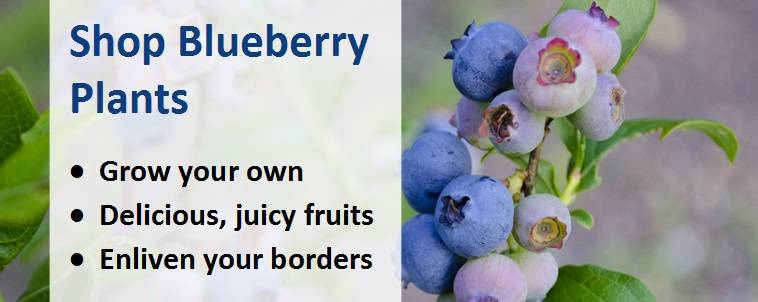How to Grow Your Own Blueberries
Blueberries are easy-to-grow, compact, productive fruit bushes, effortlessly producing an abundant crop through the summer. They can be either evergreen or deciduous, with deciduous varieties displaying fabulous fiery red autumnal colour, and usually grow to around 1.5m high, allowing you to get a strong crop whatever the size of your garden. Attractive, dainty white flowers are produced in early summer, followed by sweet and juicy blueberries, borne in clusters and packed full of vitamins. Whilst blueberries are pest and disease-free, they do require an acidic soil, similar to the requirements of rhododendrons and camellias. If you're unsure of your soil type, simply grow them in containers in an ericaceous compost - they make superb patio specimens delivering ornamental value as well as delicious fruits. For best results, grow 2 different types of blueberries together to ensure good pollination.
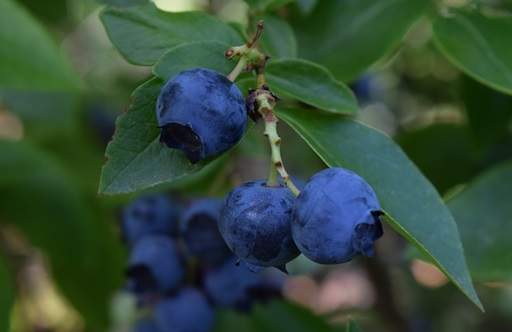
Blueberries produce an abundant crop throughout the summer
Fruit
Blueberries produce an abundant, seductively sweet crop on branches that developed the previous year. Best when allowed to fully ripen on the shrub - a luxury commercial growers cannot afford - they are considered a 'super fruit', with a high anthocyanin content and containing more antioxidants than any other fruit or vegetable. Anthocyanin is believed to reduce the risk of cancer whilst antioxidants are good for your skin and general well-being. Fruits are ripe and ready to pick when they turn a deep blue with a white bloom on the skin and pull away easily from the plant. As different fruits ripen at different times, you have to regularly pick the same bush over the ripening period to catch each fruit when its just right. Leave fruits on the plant for a few more days after they turn blue for a more intense flavour, but don't leave them too late otherwise they will drop to the ground! Blueberries taste delicious whether eaten fresh or cooked, for examples in pies, muffins or pancakes.
Recommended Blueberry Varieties
The best blueberry varieties are:
Blueberry Earliblue - produces clusters of large, light blue berries from early July which, when planted with later fruiting varieties, add several weeks onto the usual blueberry season.

Blueberry Bluecrop - upright, deciduous blueberry coming into fruit from about July and producing extremely nutritious fruit with a high vitamin content. Leaves turn a beautiful orange-red in autumn.
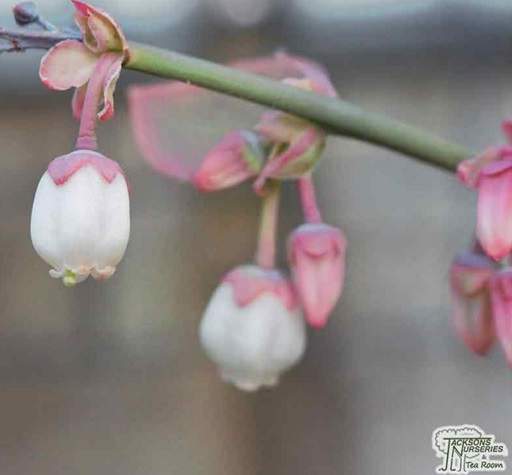
Blueberry Goldtraube - delicious, juicy, heavy-cropping variety producing an abundance of large, firm, fine-flavoured aromatic fruits which ripen from July to August and are suitable for freezing. Upright habit with serrated deciduous leaves that deliver fabulous autumnal colour.
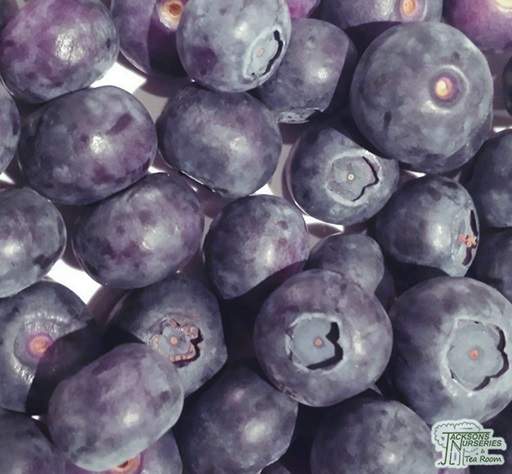
Planting Advice
Blueberries are very popular for container growing, but can succeed equally as well in the garden providing you have an acidic soil. If your garden plays host to rhododendrons and azaleas, you'll succeed in growing blueberries directly in the ground too, providing you choose a moist, yet well-drained, sheltered position, preferably in full sun. If you don't have a naturally acidic soil, you can adjust the local soil pH using sulphur chips or by adding acidic organic matter such as pine needles, leaf mould or composted conifer clippings, but be aware that mulching with an acidic material to keep the soil pH at the right level will be an on-going process. Alternatively, consider growing your blueberry in a container, incorporating some peat around the roots and using an ericaceous compost to create ideal growing conditions. Use pots which are at least 30cm (12") in diameter to allow for good root growth, and later transplant to larger 45cm (18") diameter pots if needed. As Blueberries prefer an open but moist soil, we recommend incorporating water retaining gel into your potting mixture when planting. Top off with a mulch or ornamental bark to help retain moisture and improve the appearance. Blueberries are tolerant of some shade, but crop most abundantly in full sun and their lack of thorns makes them a joy to plant, prune and harvest. Whilst blueberries are usually self-pollinating, planting 2 different varieties side-by-side to enable cross-pollination always results in a more abundant crop.
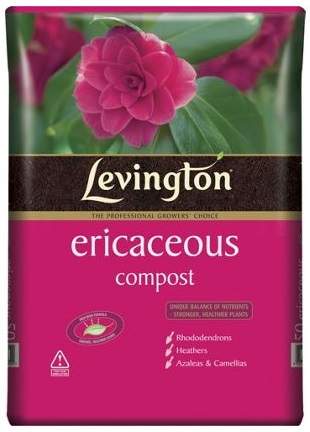
Container grown blueberries should be potted up with an ericaceous compost
Plant Care
Water your blueberry plants regularly, particularly when their buds begin to show in spring, using rainwater if at all possible. Rainwater is more likely to be acidic, whilst tap water contains lime that renders the soil less acidic over time, so will result in your soil departing from the ideal growing conditions. Feed with ericaceous plant food or a high potash feed (e.g. tomato feed) 2-3 times during the growing season in spring and summer. Protect your blueberry plants from birds using nets during the fruiting season, as blackbirds often want a piece of the goodness too! Apply a mulch of chipped pine needles, composted conifer clippings or other acidic organic matter in spring, if your bushes are grown in the ground rather than containers.

Water using rainwater if at all possible as tap water contains lime that is alkaline
Whilst minimal pruning is required for the first few years, thereafter annual pruning during the dormant season from January to March is required to keep the plant vigorous, avoid over-crowding of branches and remove any dead, dying or diseased wood. Prune by removing 1-3 of the oldest, least productive canes or those which lie on the ground when laden with fruit from the base of the plant each year. Old stems can be distinguished by their light sandy colour, whilst new stems are red. If you're unsure which stems to cut, try to choose the ones with the fewest fruit buds (fruit buds are flatter and rounder, whilst leaf buds are more compact and narrower). Also trim out any dead or damaged stems or those growing low and horizontal to the ground, to help create a healthy, open framework.
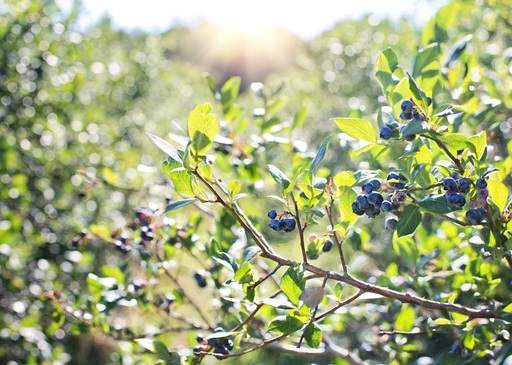
New, red shoots should be retained on the plant and older, light sandy coloured stems removed
Share this page:

